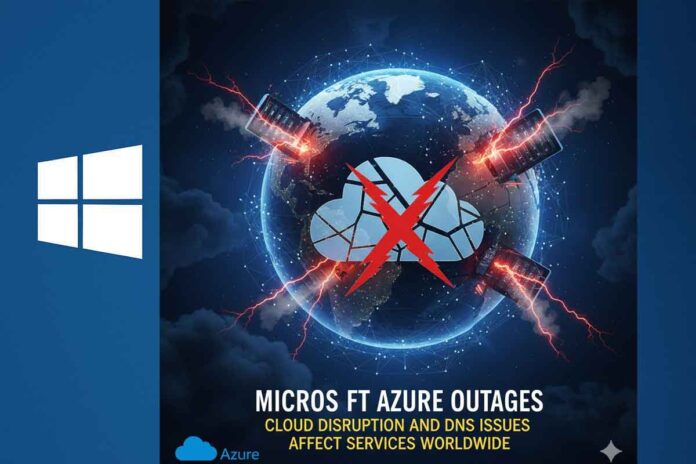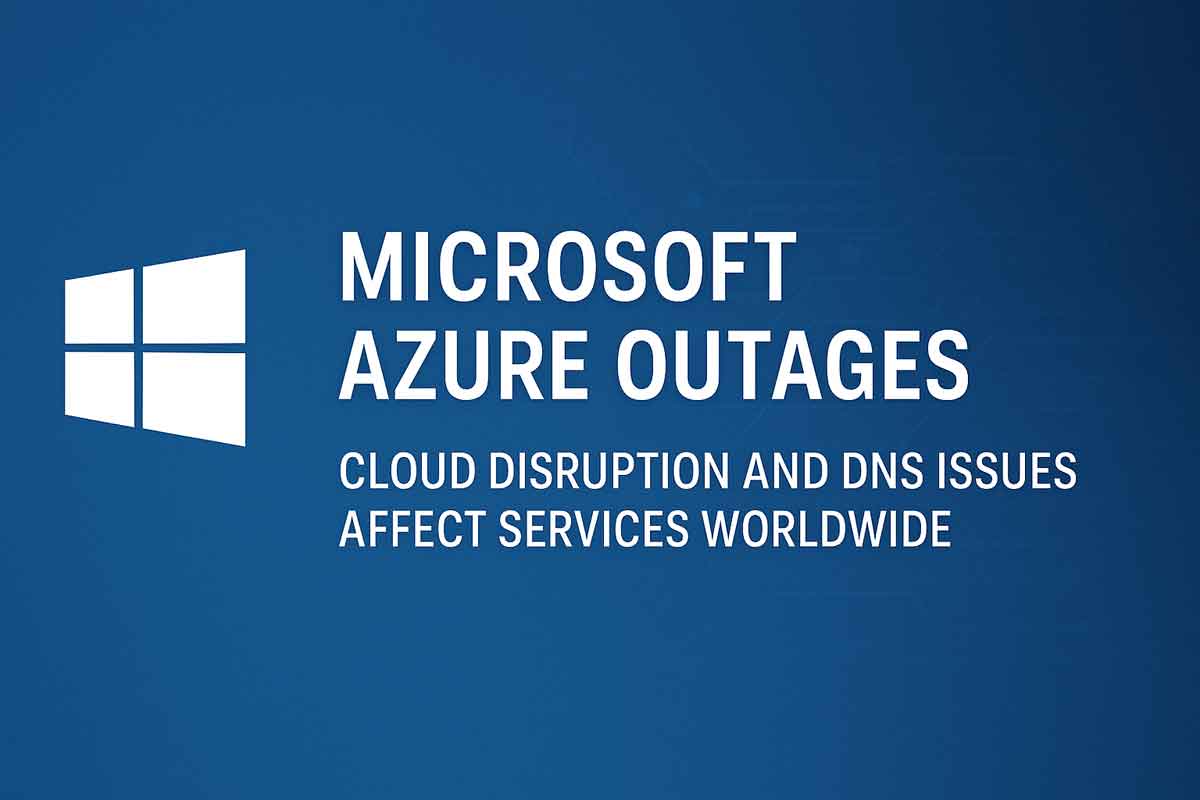Major Microsoft Azure outages recently disrupted a wide range of services, from Microsoft 365 and Xbox to business applications and some airline systems. The incident highlighted how a central cloud provider’s failure can ripple across the global internet and commercial services.
Microsoft Azure Down
The outage began as spikes on status trackers and social platforms showing users unable to access cloud apps. Many workplaces joked about a sudden “work day off” as collaboration tools and email were affected. Behind the jokes, enterprises faced real interruptions to customer service, payment acceptance and internal operations.
Microsoft Confirms DNS Issues on Azure
Microsoft confirmed the root cause was a DNS configuration change that inadvertently affected connectivity across Azure’s network. Engineers paused the rollout, started deploying a previous healthy configuration, and rerouted traffic to unaffected nodes while remediation continued.
Outage Affects Airlines and Global Clients
The outage reached major customers and public services. Reports noted disruptions to Microsoft 365 services, developer portals, gaming platforms and even voting processes in isolated cases. Airlines and other global clients reported degraded systems or service interruptions as their cloud-hosted tools lost connectivity.
Previous Microsoft Outages
Microsoft has experienced significant outages before — each episode prompting reviews of redundancy and failover plans. Past incidents prompted improvements in monitoring, regional isolation, and routing options, but this event shows configuration errors can still have wide impact when they affect DNS or core network layers.
Impact of Microsoft Azure
- Business continuity: Many firms relying on Microsoft 365 saw email and collaboration slowdowns.
- Consumer services: Gaming and streaming logins experienced interruptions.
- Critical services: Some government and enterprise functions faced delays or contingency activations.
The outage emphasised how dependent businesses and institutions have become on cloud platforms for both customer-facing and back-office systems.
Preventing Future Cloud Disasters
Key steps to reduce risk include multi-cloud or multi-region redundancy, robust DNS fallbacks, automated rollback plans for configuration changes, and regular failover drills. Organisations should design for the possibility that a major cloud provider could lose critical services and maintain local contingencies for essential operations.
Are Systems Effectively Back Online?
Microsoft reported progressive recovery after deploying a previous healthy configuration and rerouting traffic. Status pages and monitoring showed initial signs of recovery for many services, though some endpoints and marketplace features still experienced intermittent issues while nodes came back online.
Total Loss of the Outage?
While the outage was severe and global in reach, Microsoft’s remediation meant this did not result in a permanent “total loss.” Data loss was not widely reported; the primary impact was service availability and temporary disruption. Final impact assessments depend on customer reports and internal post-incident reviews.
Disclaimer
This article summarises media and provider statements about recent Microsoft Azure outages. It is informational and not an official incident report. For exact timelines, customer impact and post-mortem conclusions, consult Microsoft’s official incident updates and your organisation’s cloud provider contacts.
FAQs
Q1: What caused the Microsoft Azure outage?
A1: Microsoft attributed the outage to an inadvertent DNS configuration change and worked to roll back the change and reroute traffic to healthy infrastructure.
Q2: Which services were affected by the outage?
A2: A wide range of services including Microsoft 365, Xbox-related services and various cloud-hosted business apps experienced interruptions; some airlines and public services reported degraded systems.
Q3: Is Azure down now?
A3: Microsoft reported progressive recovery after remediation steps. Many services returned online though intermittent issues may continue while full node recovery completes. Check Azure status pages for live updates.



